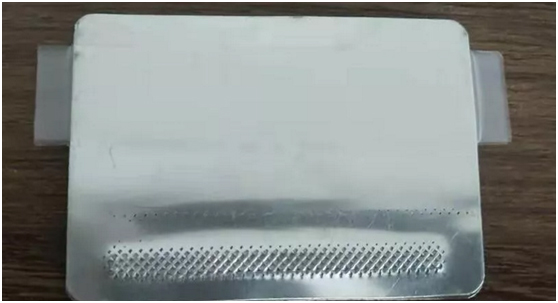
Lithium Ion Battery Tab
Lithium
Ion Battery Tab
The Battery tab is
a raw material for lithium ion polymer battery products. For
example, the mobile phone batteries used in our lives, Bluetooth batteries,
laptop batteries, etc. need to use the ear. The
battery is divided into positive and negative poles. The battery ear is the
metal conductor that leads the positive and negative poles from the battery
core. Generally speaking, the battery ears of the positive and negative poles
of the battery are the contact points when charging and discharging. The
battery ear is divided into three materials, the anode of the battery is made
of aluminum (Al) material, the negative electrode is made of nickel (Ni)
material, and the negative electrode is also made of nickel-plated nickel
(Ni-Cu) material. They are all made up of two parts of film and metal strip to
make.
The film is a
part of the ear insulator, which prevents the short circuit between the metal
strip and the aluminum plastic film when the battery is packaged, and is sealed
with the aluminum plastic film by heating (about 140 ° C) leakage.

One of the tabs
is sandwiched between two strips of metal tape. The films currently used in the
market are black rubber, white glue and single layer glue. The commonly used
black film is a three-layer structure: melanin, melting point 66 ° C; PE,
melting point 105 ° C; PP, melting point 137 ° C. The finished product package
of the ear is divided into a disc type (the whole metal strip is wound into a
disc after passing the equipment plus the film) and a plate type (the metal
strip is cut into a single piece after the film is attached, and then placed in
a row with two A thin transparent plastic sheet is sandwiched in the middle).
“Polar”
refers to the “pole” in “positive” and “negative”, and “ear” refers to the
strip used in “positive” and “negative”, which is symmetrical on both sides of
the metal strip like human “ear”. The combination of function and image is
named. Taiwan refers to “battery tab” as the “guide”. Similar to this name, the
“shoulder height” and “shoulder width” commonly used in the industry can be
considered as the continuation of the “polar ear” name or Subdivision, because
the "ear" is difficult to measure the height and width, and the "shoulder"
can be, so the "shoulder height" and "shoulder width" were
not named "ear height" and "ear width".
More precisely,
the "battery tab" is a "connecting, conducting, sealing".
“Connected” refers to the connection between the inside and outside of the
battery, the connection between the battery tab rubber and the aluminum plastic
film; “conducting” means that the electricity is led out through the tabs and
the circuit is generated; “sealing” refers to the seal between the strip and
the metal strip. The seal between the strip and the aluminum plastic film.
It is precisely
because the "battery tab" is the localization in the true sense from
the beginning, it is not a simple imitation (Sumitomo is the automatic
hot-rolling type ear at the beginning, and the domestic is the manual plate
type hot-pressing ear), high frequency The automatic roll type battery tab is
also a true localization of the battery tab device. The
nanochemistry
treatment of the surface of the ear metal band, especially the nanochemistry
treatment of the surface of the nickel-nickel nickel tape, is the innovation of
the domestic battery tab, which forces Sumitomo The battery tab has to learn
from the domestic ear, although it is used, but the surface treatment of the
metal strip has not been well solved. In this respect, there is still a certain
gap compared with the domestic battery tab. The battery tab is commonly used to
weld battery cells and current collectors with an ultrasonic welding machine.
© Copyright: 2025 Hangzhou Altrasonic Technology Co.,Ltd All Rights Reserved

IPv6 network supported
Scan to WhatsApp
